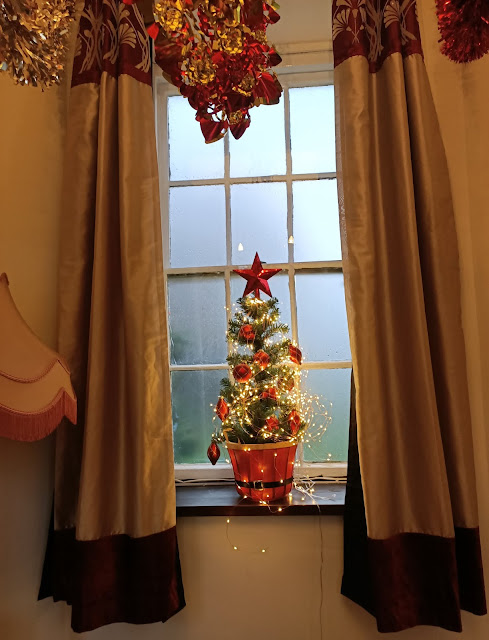A Whistle Stop Tour of Betley Court Gardens
I haven’t taken you around the gardens at Betley Court yet. The
days are short, not much time for gardening, so now’s as good a time as any. From
the main road, visitors pass the Peace Garden, created by the Professor in
1995, then an octagonal dovecote, topped by a weather vane and lantern. Turn
left following the railings around and in front of you are tall gates, made by
Charis Jones, the artist blacksmith, from the Old Forge at Etruria in
Stoke-on-Trent. They mark the 300th year of Betley Court, celebrated
in 2016, and of course, feature our grand Cedar of Lebanon, planted here by
William Barron in 1866 in the middle.
Follow the path ahead, and you come to the formal lawn to
the south of the house. Much of what you can see today was laid out by Barron.
There’s a raised terrace adjacent to the house, with a gravel path. At the end
of the path is a rather shaggy cluster of yews. This was planted by Barron too,
drawn on his original design for the parterre. We have photos when it was well
maintained topiary, and it served as a privacy screen obscuring the gardens
from the road. Well, the Fletcher Twemlows’ didn’t want villages peering at
them as they played croquet on the lawn, did they? Steps lead down to the lowered lawn (another
Barron addition). Three flower beds, two circular and four rectangular lay
either side of the path. They were laid out between 1909-25, and have been
attributed to Thomas Mawson, the arts and crafts landscaper, but we haven’t
been able to verify this. Barron’s Cedar of Lebanon takes pride of place in the
centre of the lawn.
Beyond the lawn, fabulous views can be seen across farm
pasture down to Betley Mere. This landscape was conceived by William Emes, a
confrere of ‘Capability’ Brown, with a big helping hand from Nature! From the
lawns, a long straight broad path takes you from the formal part of the gardens
into the wilder wooded landscape. The focal point at the end is a little red
sandstone building – the gazebo – believed to be made from stone from Stafford Castle.
Off to the right, the path become less formal, and starts winding through
woodland. This area is known as The Dingle, and in springtime boasts one of the
finest bluebell woods I’ve ever seen, at its best around the time of my
birthday, at the end of April.
The path continues in a loop around a picturesque Victorian
artificial lake, retained by a dam that has an eel trap incorporated into it
(note to self; that would make a good subject for a future post). It’s a lovely
extension to the formal parts of the gardens, added by 1824, according to a
garden survey in that year. It is covered by a fine canopy of deciduous trees,
teeming with woodland critters including foxes, hedgehogs, badgers, rabbits to
name a few. The path arcs up on the far side of Tanhouse Brook, affording
lovely glimpses down into the valley carved by the brook, then descends steeply
down steps to a small bridge.
Cross the bridge, and the path begins to climb up, taking
you to the high walls of Betley Court’s former walled gardens, today the site
of a modern housing development. The path eventually joins up with the long
path, taking you back to the house. You can follow the route on the map I’ve
included in the post, one I drew in 1995. One day, I hope you’ll join us when
we’re open to the public and explore Betley Court Gardens for yourself.
This concludes a somewhat whistle-stop tour of the gardens.
I’ll return to various areas of the grounds in future posts no doubt. Writing
this will give me the excuse to investigate certain areas in more detail. For a garden history enthusiast, that’s going
to be a lot of fun!






Comments
Post a Comment